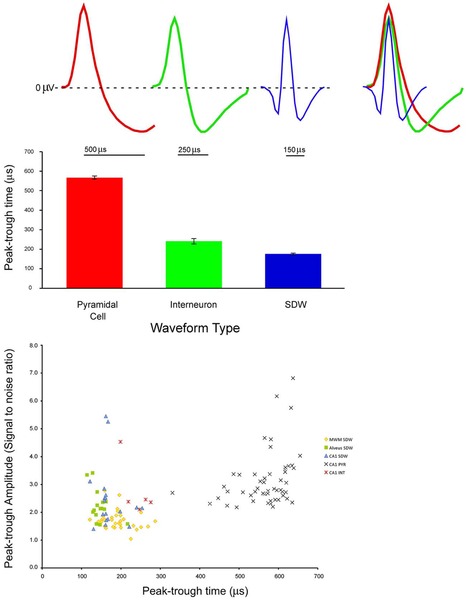An axon or nerve fiber is a long, slender projection of a nerve cell, or neuron, in vertebrates, that typically conducts electrical impulses known as action potentials away from the nerve cell body. The function of the axon is to transmit information to different neurons, muscles, and glands. In certain sensory neurons, such as those for touch and warmth, the axons are called afferent nerve fibers and the electrical impulse travels along these from the periphery to the cell body and from the cell body to the spinal cord along another branch of the same axon. Axon dysfunction can be the cause of many inherited and acquired neurological disorders that affect both the peripheral and central neurons. Nerve fibers are classed into three types – group A nerve fibers, group B nerve fibers, and group C nerve fibers. Groups A and B are myelinated, and group C are unmyelinated. These groups include both sensory fibers and motor fibers. Another classification groups only the sensory fibers as Type I, Type II, Type III, and Type IV.

A dissected human brain, showing grey matter and white matter
TEM of a myelinated axon in cross-section.
Axon of nine-day-old mouse with growth cone visible
(A) pyramidal cell, interneuron, and short duration waveform (Axon), overlay of the three average waveforms; (B) Average and standard error of peak-trough time for pyramidal cells interneurons, and putative axons; (C) Scatter plot of signal to noise ratios for individual units againstpeak-trough time for axons, pyramidal cells (PYRs) and interneurons (INTs).
Vertebrates are deuterostomal animals with bony or cartilaginous axial endoskeleton — known as the vertebral column, spine or backbone — around and along the spinal cord, including all fish, amphibians, reptiles, birds and mammals. The vertebrates consist of all the taxa within the subphylum Vertebrata and represent the overwhelming majority of the phylum Chordata, with currently about 69,963 species described.
Fossilized skeleton (cast) of Diplodocus carnegii, showing an extreme example of the backbone that characterizes the vertebrates.
Gill arches bearing gills in a pike
The early vertebrate Haikouichthys
Acanthostega, a fish-like early labyrinthodont.








